
Neuroscience of Consciousness
Scope & Guideline
Fostering Innovation in the Science of the Mind
Introduction
Aims and Scopes
- Neural Correlates of Consciousness (NCC):
Research focused on identifying and understanding the specific neural mechanisms that correlate with conscious experiences, including various brain regions and their interactions. - Psychedelic Research:
Investigating the effects of psychedelics on consciousness, exploring how these substances alter perception, cognition, and emotional states, and their potential therapeutic applications. - Metacognition and Self-awareness:
Examining the nature of self-awareness and metacognitive processes, including how individuals reflect on their own thoughts and experiences. - Complex Systems and Consciousness:
Applying complex systems theory to understand consciousness as a multidimensional phenomenon, exploring how different cognitive processes interact. - Phenomenological and Subjective Experience:
Focusing on the qualitative aspects of conscious experience, including feelings, perceptions, and the subjective nature of awareness. - Cognitive and Sensory Processing:
Studying how sensory inputs and cognitive processes contribute to conscious experience, including visual and auditory awareness. - Disorders of Consciousness:
Researching conditions that affect consciousness, such as coma, vegetative state, and the impact of anesthesia on conscious experience. - Computational and Theoretical Models:
Developing computational models and theoretical frameworks to explain consciousness, including predictive coding and active inference.
Trending and Emerging
- Active Inference and Predictive Coding:
Recent publications are increasingly focusing on active inference and predictive coding theories, exploring how these frameworks can explain perceptual and cognitive processes in relation to consciousness. - Psychedelic-Assisted Therapy:
There is a growing body of research investigating the therapeutic potential of psychedelics, particularly in the treatment of mental health disorders and their effects on consciousness. - Neurophenomenology:
An emerging trend towards integrating phenomenological approaches with neuroscience is gaining traction, emphasizing the importance of subjective experience in understanding consciousness. - Computational Neuroscience Models:
The use of computational models and simulations to investigate consciousness is on the rise, providing new insights into the mechanisms underlying conscious experience. - Consciousness in Virtual and Augmented Realities:
Research exploring consciousness in the context of virtual and augmented realities is increasing, examining how these technologies affect perception, self-identity, and social interaction. - Interdisciplinary Approaches:
An emerging trend is the collaboration between disciplines such as cognitive science, psychology, neuroscience, and philosophy, leading to richer, more comprehensive studies of consciousness.
Declining or Waning
- Traditional Dualism and Cartesian Approaches:
There has been a noticeable decline in papers supporting traditional dualistic views of consciousness, as the field increasingly favors integrated and materialistic approaches. - Overly Reductionist Explanations:
Research that attempts to reduce consciousness to simplistic neural mechanisms without considering the complexities of experience is less frequently published, indicating a shift toward more nuanced understandings. - Static Models of Consciousness:
Static or fixed models that do not account for the dynamic nature of consciousness are being phased out in favor of models that embrace variability and adaptability. - Purely Philosophical Discussions:
While philosophy remains important, there is a trend away from purely philosophical discussions of consciousness towards empirical research and interdisciplinary approaches. - Focus on Individual Neural Structures:
The previous emphasis on isolated brain structures as the primary correlates of consciousness is declining, as research now favors network-based approaches that consider interactions among multiple brain areas.
Similar Journals
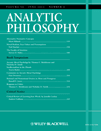
Analytic Philosophy
Illuminating the Path of Modern Philosophical AnalysisAnalytic Philosophy is a prestigious journal published by Wiley, dedicated to advancing critical discourse in the realm of philosophy. With an ISSN of 2153-9596 and an E-ISSN of 2153-960X, this journal has rapidly established itself as a vital resource for researchers, professionals, and students seeking to explore contemporary philosophical debates and analytic methods. Operating from the heart of the United States, located at 111 River St, Hoboken, NJ, it holds an impressive Q1 classification in the field of philosophy for 2023, ranking #190 out of 806 within Scopus's Arts and Humanities category, placing it in the top 76th percentile. The journal’s commitment to rigor and innovation makes it an essential platform for thought-provoking research and discussions in analytic philosophy. Researchers will appreciate the journal’s high standards and its significant impact within the academic community.
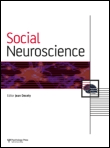
Social Neuroscience
Bridging Neuroscience and Social Psychology for a Deeper UnderstandingSocial Neuroscience is a premier academic journal dedicated to advancing the interdisciplinary field that lies at the intersection of social psychology, behavioral neuroscience, and developmental studies. Published by ROUTLEDGE JOURNALS, TAYLOR & FRANCIS LTD, this journal has made significant strides since its establishment in 2006, with a convergence period extending to 2024. It regularly features innovative research articles that explore the neural basis of social behaviors and the impact of social interactions on brain function. Holding esteemed rankings in Scopus, including Q2 status in both Development and Social Psychology categories, it appeals to a broad array of scholars and practitioners keen on understanding human behavior through a neuroscientific lens. The journal's commitment to fostering critical discussions and publishing impactful research makes it an essential resource for professionals, researchers, and students alike who seek to deepen their understanding of the complex interplay between social processes and neural mechanisms.

Integrative Psychological and Behavioral Science
Unraveling the Complexities of Psychological ScienceIntegrative Psychological and Behavioral Science is a premier scholarly journal published by Springer, dedicated to advancing the understanding of complex psychological and behavioral processes. As an essential resource for researchers and practitioners alike, this journal features peer-reviewed articles that span diverse disciplines, including psychology, anthropology, cultural studies, and philosophy, reflecting its broad interdisciplinary scope. With an impressive impact factor and categorization across various quartiles, including Q1 in Cultural Studies and Philosophy, it stands out in the academic landscape, fostering innovative research that informs both theory and practice. The ISSN for this journal is 1932-4502, and the E-ISSN is 1936-3567. While the journal does not currently operate under an open access model, it ensures rigorous academic standards and accessibility through institutional subscriptions. With converged years from 1969, 1976, and from 2007 to 2024, Integrative Psychological and Behavioral Science remains a vital platform for dialogue and discovery in the pressing issues that shape human behavior and mental processes.
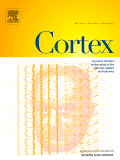
CORTEX
Transforming Knowledge into Practice in Cognitive ScienceCORTEX is a premier international journal published by Elsevier Masson, focusing on the cutting-edge areas of cognitive neuroscience, psychology, and neurology. With an impressive impact factor that places it in Q1 quartiles across multiple categories such as Cognitive Neuroscience and Neuropsychology, this journal serves as a vital resource for researchers, clinicians, and students alike. Established in 1964, CORTEX has continued to excel in disseminating high-quality scholarly work, offering insights that significantly enhance our understanding of the brain's functioning and behavior. Although not an open-access publication, it provides various access options to ensure the dissemination of knowledge is as wide-reaching as possible. As the field of cognitive psychology evolves, CORTEX remains at the forefront, fostering an environment for interdisciplinary collaboration and innovation. Researchers seeking to stay engaged with the latest advancements will find CORTEX an indispensable tool for their professional development.
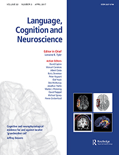
Language Cognition and Neuroscience
Bridging Linguistics and Neuroscience for a Deeper UnderstandingLanguage Cognition and Neuroscience is a premier peer-reviewed journal published by ROUTLEDGE JOURNALS, TAYLOR & FRANCIS LTD, focusing on the intersection of linguistics, cognitive psychology, and neuroscience. Since its inception in 2013, this journal has established itself as a vital resource for researchers and scholars, contributing significantly to the understanding of how language is processed and represented in the brain. With its impressive rankings in various categories—Q1 in Linguistics and Language, Q2 in Cognitive Neuroscience, and Experimental and Cognitive Psychology—it caters to a diverse and interdisciplinary audience. The journal is accessible to readers worldwide, effectively communicating cutting-edge research and innovative methodologies in the field. Open Access options enable broader disseminations of knowledge, ensuring that significant findings reach both academic and practical applications. With a commitment to high-quality research, Language Cognition and Neuroscience continues to be an influential platform for advancing theories and practices within cognitive science and language studies.
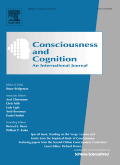
CONSCIOUSNESS AND COGNITION
Elevating Understanding in Consciousness and CognitionConsciousness and Cognition is a prestigious academic journal dedicated to advancing the understanding of cognitive processes and consciousness. Published by Academic Press Inc, Elsevier Science, the journal has maintained a prominent presence in the field since its inception in 1992, reaching a converged publication timeline through 2024. With an impact factor reflecting its high relevance, it holds a Q1 rank in Arts and Humanities and Q2 ranks in both Developmental and Educational Psychology and Experimental and Cognitive Psychology as of 2023. Researchers and academics utilize this journal as a critical resource for the latest empirical findings, theoretical advancements, and innovative methodologies in understanding the intricacies of human cognition and conscious experience. Although it does not offer open access, the journal’s extensive contributions help shape active dialogues within this interdisciplinary domain, making it essential reading for professionals, researchers, and students alike striving to explore the mysteries of consciousness.

COGNITIVE AFFECTIVE & BEHAVIORAL NEUROSCIENCE
Transforming Understanding: The Science Behind Thoughts, Feelings, and ActionsCOGNITIVE AFFECTIVE & BEHAVIORAL NEUROSCIENCE (ISSN: 1530-7026, E-ISSN: 1531-135X) is an esteemed journal published by SPRINGER that aims to advance the understanding of the interplay between cognitive processes, affective states, and behavioral responses in the field of neuroscience. Established in 2001, the journal provides a rigorous platform for disseminating high-quality research, with a significant focus on both Behavioral Neuroscience and Cognitive Neuroscience. Classified in Q1 and Q2 quartiles for 2023, it ranks highly within its categories, holding positions of #37 out of 88 and #46 out of 115 respectively in the Scopus listings. Although not an open-access publication, readers can access a wealth of valuable insights and innovative findings that enrich the scientific community's understanding of brain function and behavior. The journal's emphasis on interdisciplinary research contributes to its esteemed reputation, making it a vital resource for students, researchers, and professionals striving to explore the complex nature of the human mind and behavior.

Investigaciones Fenomenologicas
Pioneering Research at the Intersection of Experience and KnowledgeInvestigaciones Fenomenologicas is a pioneering journal in the field of phenomenological research, dedicated to exploring the depths of human experience and consciousness. Published by the UNIV NACL EDUCACION & DISTANCIA-UNED in Madrid, Spain, this journal serves as a vital platform for scholars and practitioners who strive to deepen their understanding of phenomenology and its applications in various disciplines, including psychology, education, and the social sciences. With a commitment to fostering intellectual dialogue, Investigaciones Fenomenologicas invites contributions that challenge conventional paradigms and enrich the academic landscape through empirical studies, theoretical discussions, and critical analyses. While currently not open access, the journal’s exclusive focus on phenomenology makes it an essential resource for researchers and students aiming to stay abreast of the latest developments and methodologies in this evolving field. ISSN: 1885-1088.
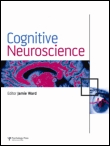
Cognitive Neuroscience
Unraveling the Mysteries of CognitionCognitive Neuroscience is a pivotal journal in the ever-evolving field of cognitive neuroscience, published by Routledge Journals, Taylor & Francis Ltd, in the United Kingdom. Since its inception in 2010, this journal has dedicated itself to publishing innovative research that explores the intricate relationships between neural mechanisms and cognitive processes. With an increasing focus on interdisciplinary studies, it addresses critical issues from both theoretical and empirical perspectives. Although it currently holds a Q3 ranking in the Cognitive Neuroscience category, it has made significant strides in its Scopus ranking, now positioned at #62 out of 115, reflecting its growing impact on the academic community. Researchers and professionals will find the journal an invaluable resource for staying updated on the latest findings and methodologies in the field. While the journal operates under a traditional access model, it ensures high visibility and dissemination of crucial research that shapes our understanding of the brain's role in cognition. As it continues to evolve through to 2024, Cognitive Neuroscience remains committed to fostering collaboration and inspiring future innovations within the discipline.

Phenomenology and the Cognitive Sciences
Advancing Interdisciplinary Insights in Human UnderstandingPhenomenology and the Cognitive Sciences is a leading interdisciplinary journal published by Springer, dedicated to exploring the intersections of cognitive science and phenomenological philosophy. Since its inception in 2004, this journal has established itself as a vital resource for researchers and scholars, achieving Q2 status in Cognitive Neuroscience and Q1 in Philosophy according to the 2023 Category Quartiles, highlighting its significance in both fields. With an ISSN of 1568-7759 and an E-ISSN of 1572-8676, the journal provides a platform for innovative research, fostering insightful dialogues that bridge the gaps between cognitive processes and human experience. Its current Scopus rankings place it in an impressive 97th percentile for Philosophy and 59th percentile for Cognitive Neuroscience, reflecting its academic impact. Although not an open-access journal, researchers and students can access its rich repository of articles to deepen their understanding of how cognitive science informs philosophical inquiry and vice versa, making it an indispensable tool for anyone committed to advancing knowledge in these vital areas.